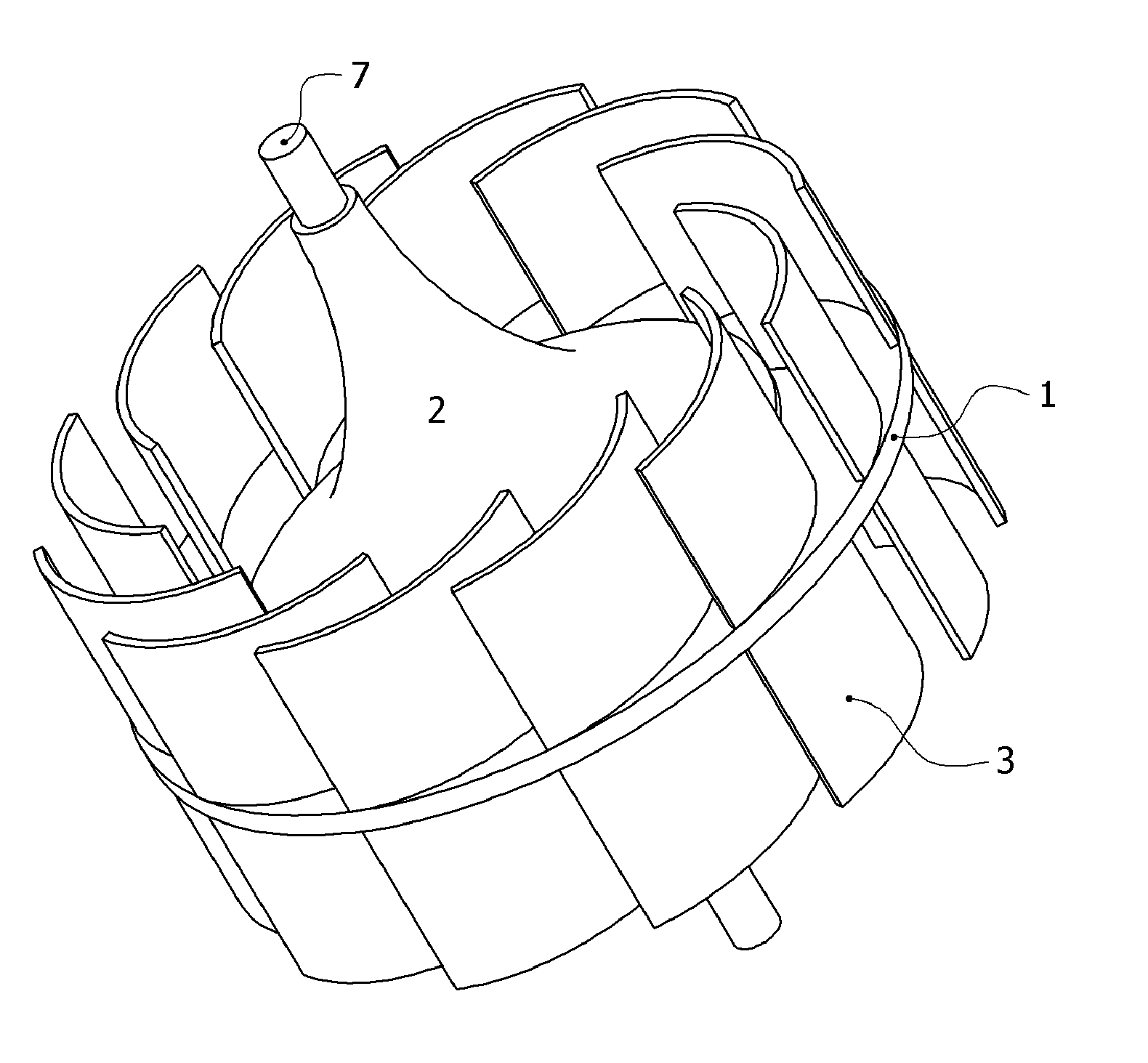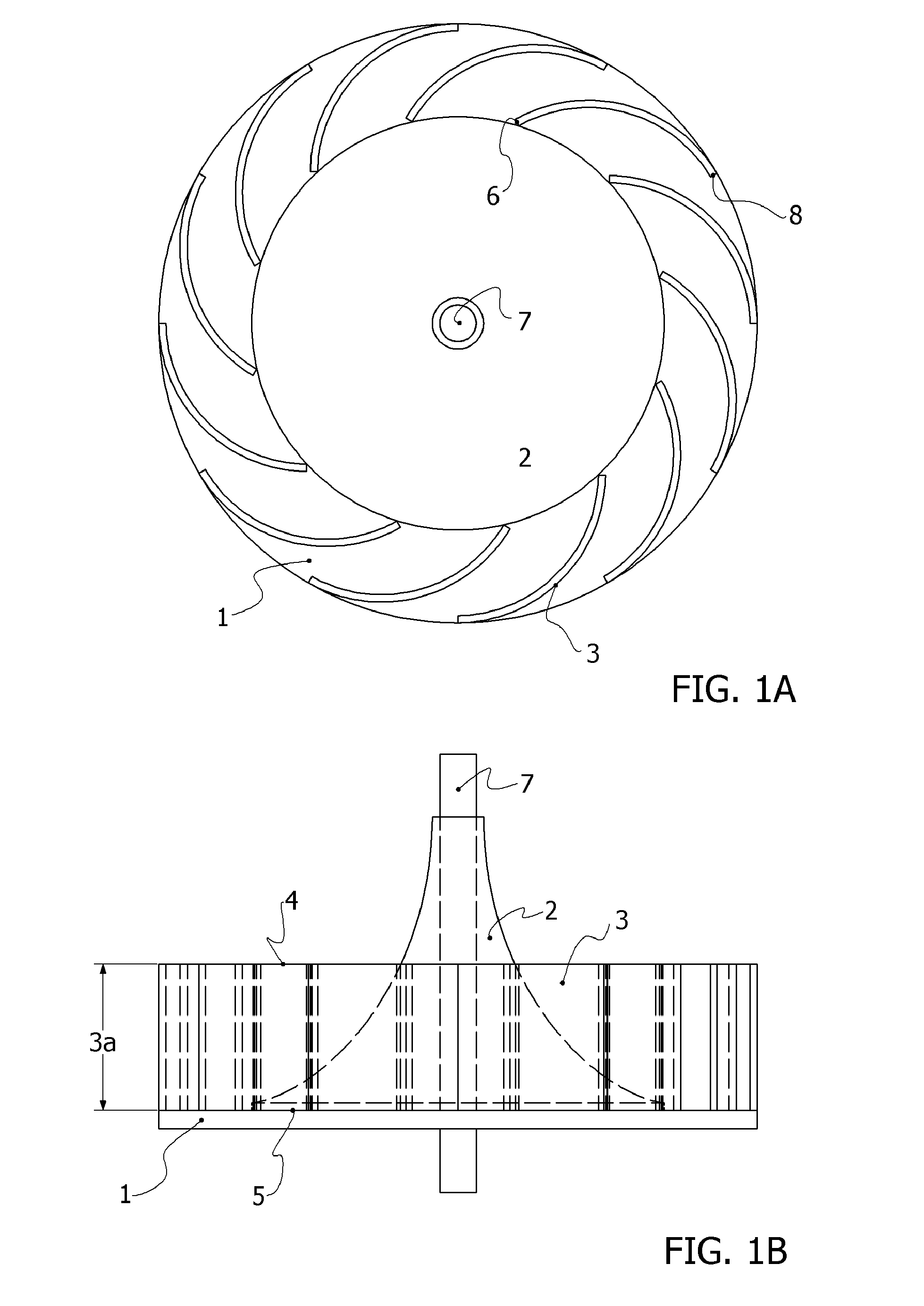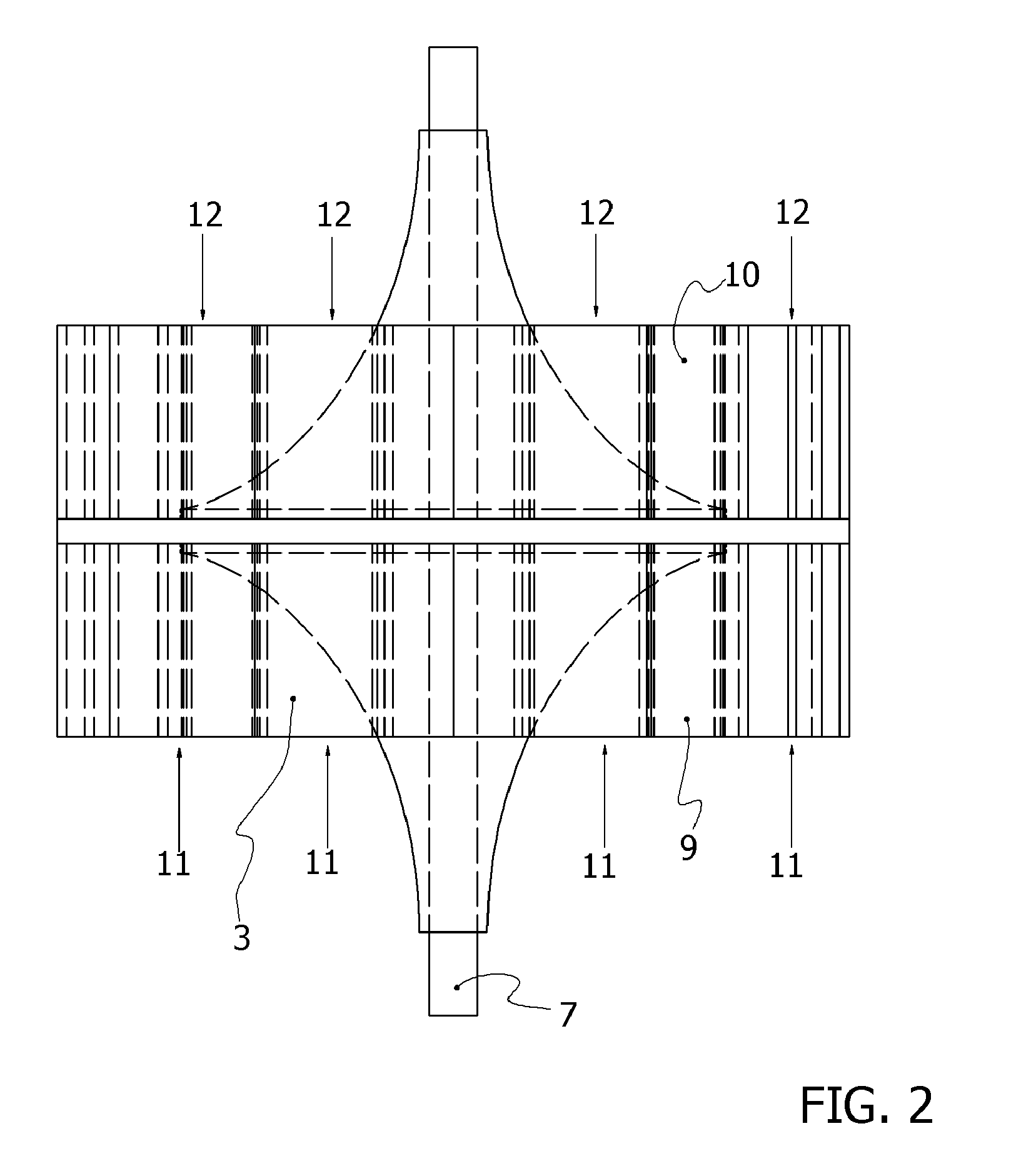Flow Stream Momentum Conversion Device Power Rotor
a technology of momentum conversion and flow stream, which is applied in the direction of electric generator control, renewable energy generation, greenhouse gas reduction, etc., can solve the problems of shaft torque increase, rotational speed decrease, etc., and achieve optimal blade curvature and height, maximize shaft power, and maximize inlet stream area
- Summary
- Abstract
- Description
- Claims
- Application Information
AI Technical Summary
Benefits of technology
Problems solved by technology
Method used
Image
Examples
Embodiment Construction
[0016]The utility, uniqueness, and non-obvious aspects in the construction and applications of the Flow Stream Momentum Conversion Device (FSMCD) Power Rotor will now be described, while referring to the drawings referenced.
[0017]Referring to the plan view of the upstream end of a unidirectional FSMCD depicted in FIG. 1A, flow of fluid in (axially) and out (circumferentially) will cause the device to rotate in the counter clockwise (CCW) direction. The curved blades 3 configured as shown are, arbitrarily, configured with Left Handed orientation. The device may also be equipped with Right Handed blade orientation, which results in clockwise (CW) rotation of the device.
[0018]This embodiment of the invention incorporates a barrier plate 1 that is circular in shape, lying in a plane orthogonal to the inlet stream flow, attached to a shaft 7. The barrier plate 1 defines the axially directed cross sectional area of the device. This embodiment may or may not contain a radial fluid deflecto...
PUM
 Login to View More
Login to View More Abstract
Description
Claims
Application Information
 Login to View More
Login to View More - R&D
- Intellectual Property
- Life Sciences
- Materials
- Tech Scout
- Unparalleled Data Quality
- Higher Quality Content
- 60% Fewer Hallucinations
Browse by: Latest US Patents, China's latest patents, Technical Efficacy Thesaurus, Application Domain, Technology Topic, Popular Technical Reports.
© 2025 PatSnap. All rights reserved.Legal|Privacy policy|Modern Slavery Act Transparency Statement|Sitemap|About US| Contact US: help@patsnap.com



